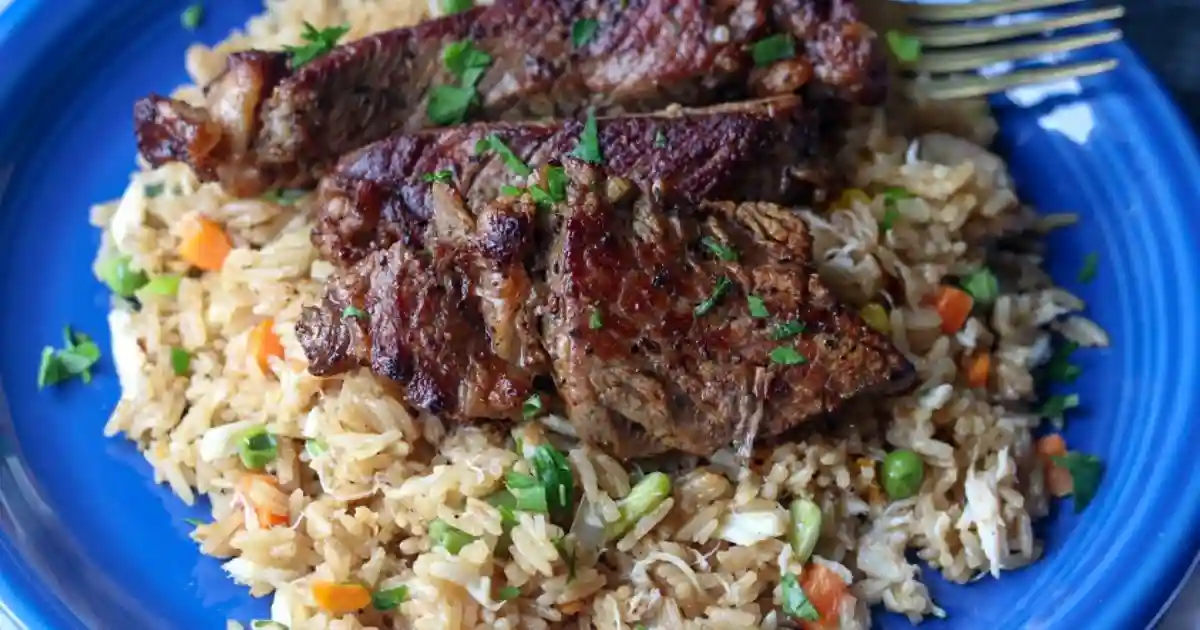Table of Contents
Steak and Rice Secrets: Unlock the Perfect Recipe for a Sizzling Meal!
Imagine sitting down after a long day to a plate of tender, juicy steak paired with perfectly cooked rice. The kind of meal that’s satisfying, hearty, and comforting, but also impressively delicious. If you’ve been searching for the ultimate steak and rice recipe, you’re in the right place. In this guide, you’ll uncover the essential secrets to mastering this classic dish, whether you’re cooking for yourself or hosting a special dinner. From selecting the right steak cut to perfecting the rice, we’ll cover everything you need to know to create a mouthwatering meal.
Let’s dive into the savory world of steak and rice—uncovering tips, techniques, and flavor combinations that’ll have you cooking like a pro!
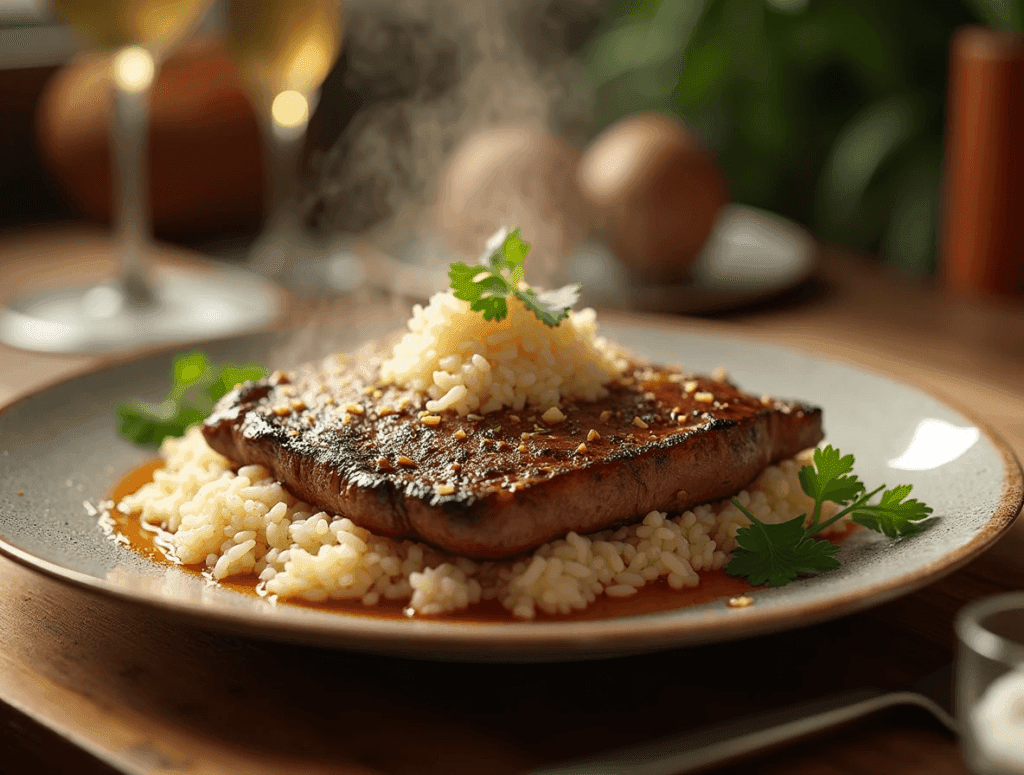
The Foundation of Flavor: Why Steak and Rice Pair Perfectly
You may be wondering what makes steak and rice such a magical combination. The answer lies in their complementary qualities. Steak, with its rich, savory flavor and tender texture, provides a satisfying bite. Meanwhile, rice offers a neutral, fluffy base that absorbs the steak’s juices and any accompanying sauces, elevating the overall taste experience.
Whether you’re preparing a quick weeknight dinner or a weekend feast, this dish is the perfect balance of protein and carbs. Plus, it’s versatile enough to suit a wide range of cuisines and flavors.
- The protein: Steak is an excellent source of protein, which is essential for muscle repair, immune function, and overall body health.
- The carbs: Rice is a great source of carbohydrates, providing the energy your body needs for the day ahead.
- Culinary versatility: Steak and rice can be tailored to various flavor profiles, from Asian-inspired to Latin American or even classic American comfort food.
By pairing the right steak cut with the perfect type of rice, you can create a meal that’s both indulgent and nutritious, leaving you satisfied and ready to take on whatever comes next.
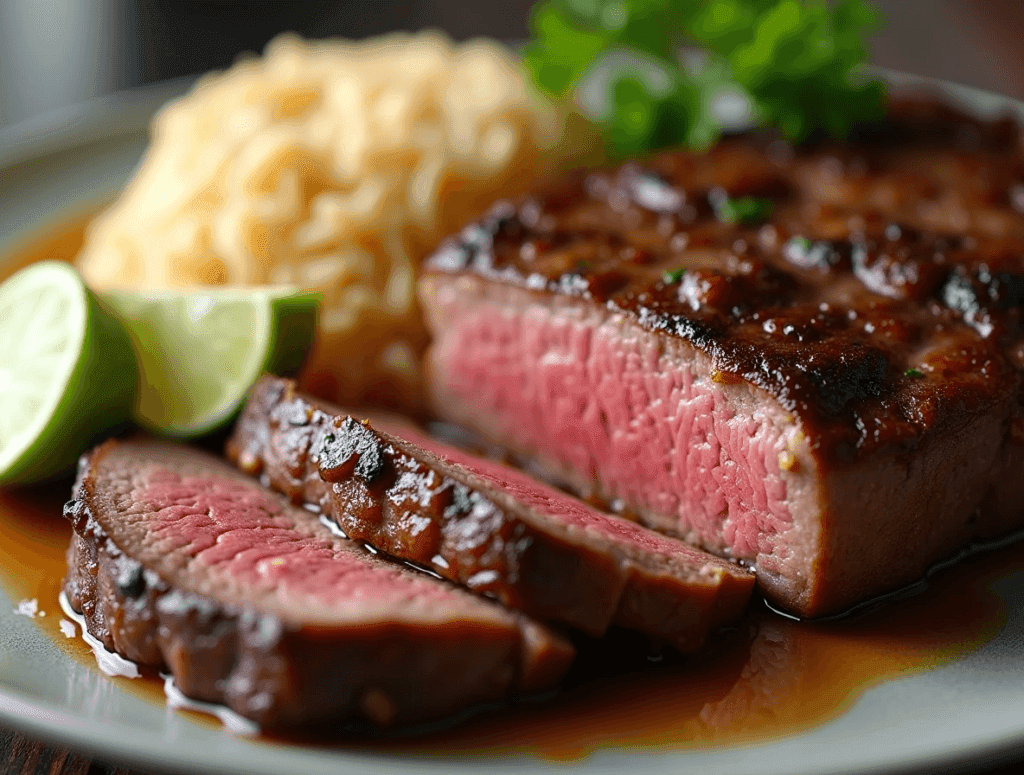
Selecting the Best Steak for the Job: A Cut Above the Rest
When it comes to choosing the right steak for your dish, the cut you select plays a major role in the flavor, texture, and overall success of the meal. Different cuts have distinct characteristics, so it’s important to choose one that matches your preferences and cooking method.
Popular steak cuts for steak and rice:
- Ribeye: Known for its rich marbling, ribeye steaks are tender and packed with flavor. The fat in the ribeye melts during cooking, infusing the meat with juiciness and richness. If you prefer a steak that’s full of flavor, ribeye is a fantastic choice.
- Sirloin: Sirloin is leaner than ribeye but still offers great flavor. It’s a versatile cut that works well for grilling or pan-searing, and it’s a more affordable option if you’re on a budget.
- Filet Mignon: For a truly tender, melt-in-your-mouth experience, filet mignon is the top choice. While it lacks the rich marbling of ribeye, it’s incredibly tender and light, making it perfect for those who prefer a leaner steak.
- New York Strip: This cut offers a nice balance between tenderness and flavor. It has a bit of fat along the edge, which contributes to its rich flavor while still being lean enough for those who want something in between.
When selecting your steak, think about the flavor and texture you prefer. If you like rich, fatty cuts, ribeye will deliver. If you prefer something leaner with a clean, beefy taste, sirloin or filet mignon may be the right choice.
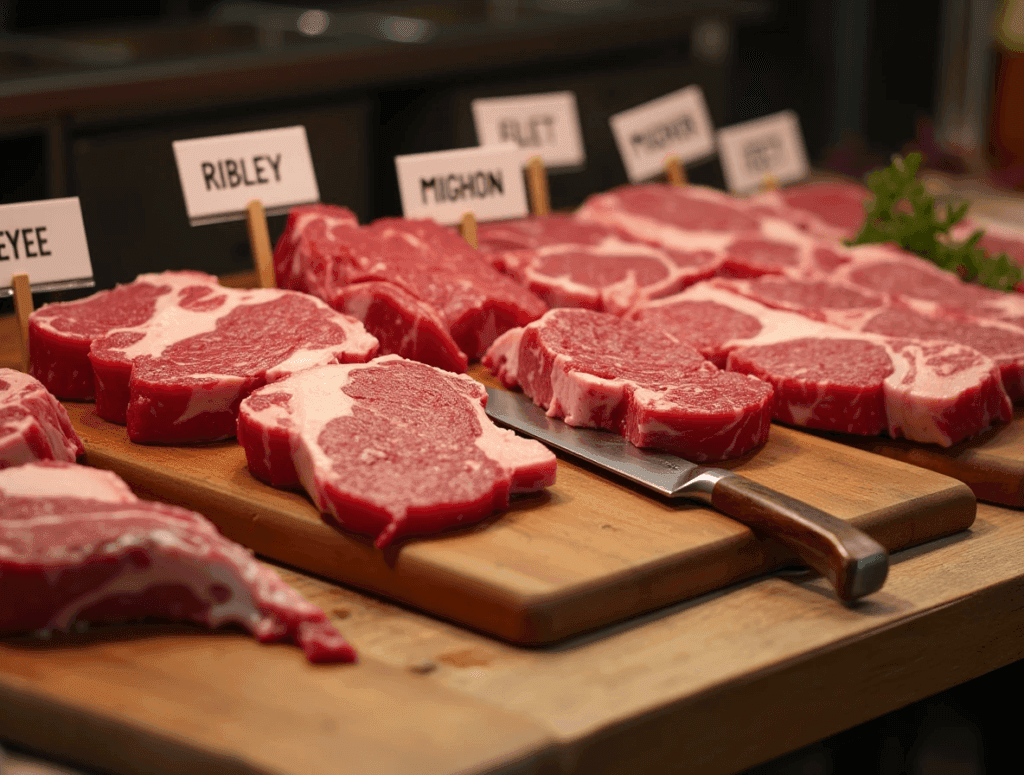
Mastering the Cooking Techniques: Perfect Steak Every Time
Cooking steak to perfection isn’t as difficult as it might seem. With the right technique, you can achieve a beautifully cooked steak with a perfect sear and juicy interior. Here are the most important steps to follow:
1. Room Temperature is Key: Before cooking your steak, take it out of the refrigerator and let it rest at room temperature for about 20-30 minutes. This ensures that the steak cooks evenly, as cold steak can result in uneven cooking.
2. Seasoning: Season your steak generously with salt and freshly cracked black pepper. Don’t be afraid to use a little extra seasoning—it helps enhance the natural flavors of the meat. You can also add herbs like rosemary or thyme for an extra touch of flavor.
3. Cooking Methods: There are several ways to cook steak, depending on your preferences. Here are a few popular methods:
- Grilling: Ideal for those who love a smoky flavor, grilling provides beautiful grill marks and a slightly charred exterior while keeping the inside juicy.
- Pan-Searing: A classic method that works well for all cuts of steak. Use a heavy skillet, such as cast iron, to achieve a nice sear on both sides.
- Sous-Vide: For perfect control over doneness, sous-vide cooking is an excellent method. It involves sealing the steak in a vacuum bag and cooking it in water at a controlled temperature before finishing with a quick sear.
4. Monitoring Doneness: Use a meat thermometer to check the internal temperature of your steak. Here are the ideal temperatures for different levels of doneness:
- Rare: 120-125°F
- Medium-Rare: 130-135°F
- Medium: 140-145°F
- Medium-Well: 150-155°F
- Well-Done: 160°F and above
Remember, the steak will continue to cook slightly after it’s removed from the heat, so it’s important to take it off a few degrees before it reaches your desired doneness.
5. Resting the Steak: Let your steak rest for at least 5-10 minutes before cutting into it. This helps the juices redistribute throughout the meat, ensuring that it remains tender and juicy.
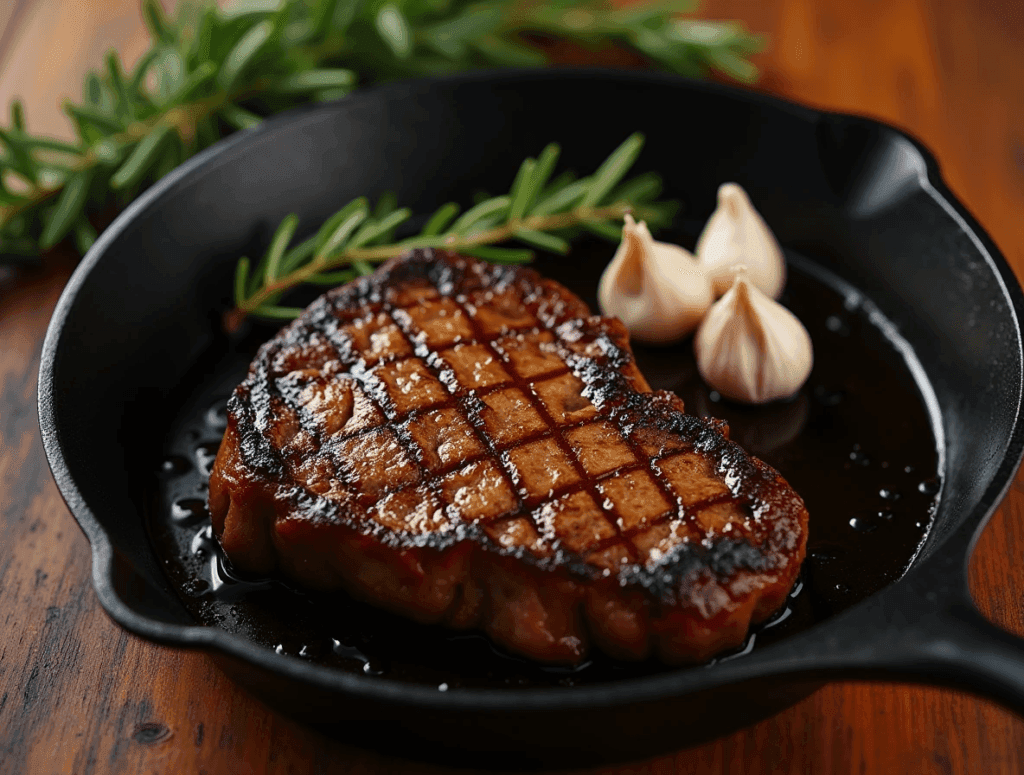
Rice Like a Pro: Choosing and Preparing the Best Rice for Steak
While the steak might take center stage, the rice is just as important. Choosing the right type of rice and cooking it properly is key to ensuring your dish is balanced and flavorful.
Types of Rice:
- White Rice (Jasmine or Basmati): These aromatic rice varieties are perfect for steak and rice dishes because of their subtle fragrance and fluffy texture. They absorb the steak’s juices beautifully without overpowering the flavor.
- Brown Rice: A healthier alternative, brown rice is nutty, chewy, and full of fiber. It’s a great option if you’re looking for a whole-grain option that pairs well with steak.
- Wild Rice: If you’re looking for something a bit different, wild rice has a slightly earthy flavor and a firmer texture, which can create a lovely contrast with the tender steak.
Cooking Rice to Perfection:
- Start by rinsing the rice under cold water to remove excess starch.
- For white rice, the general rule is to use a 2:1 water-to-rice ratio. For brown rice, use 2.5 cups of water for every cup of rice.
- Bring the water and rice to a boil, then cover the pot and reduce the heat to low. Let it simmer until the rice is tender and the water is absorbed—about 18 minutes for white rice, and up to 40 minutes for brown rice.
- Fluff the rice with a fork after cooking to separate the grains and avoid any clumping.
Seasoning the Rice: While the steak will provide plenty of flavor, it’s important to season your rice to ensure it’s not bland. You can use salt, pepper, and a bit of butter or olive oil. For a more flavorful option, try cooking the rice in broth or adding herbs like bay leaves or thyme to the pot.
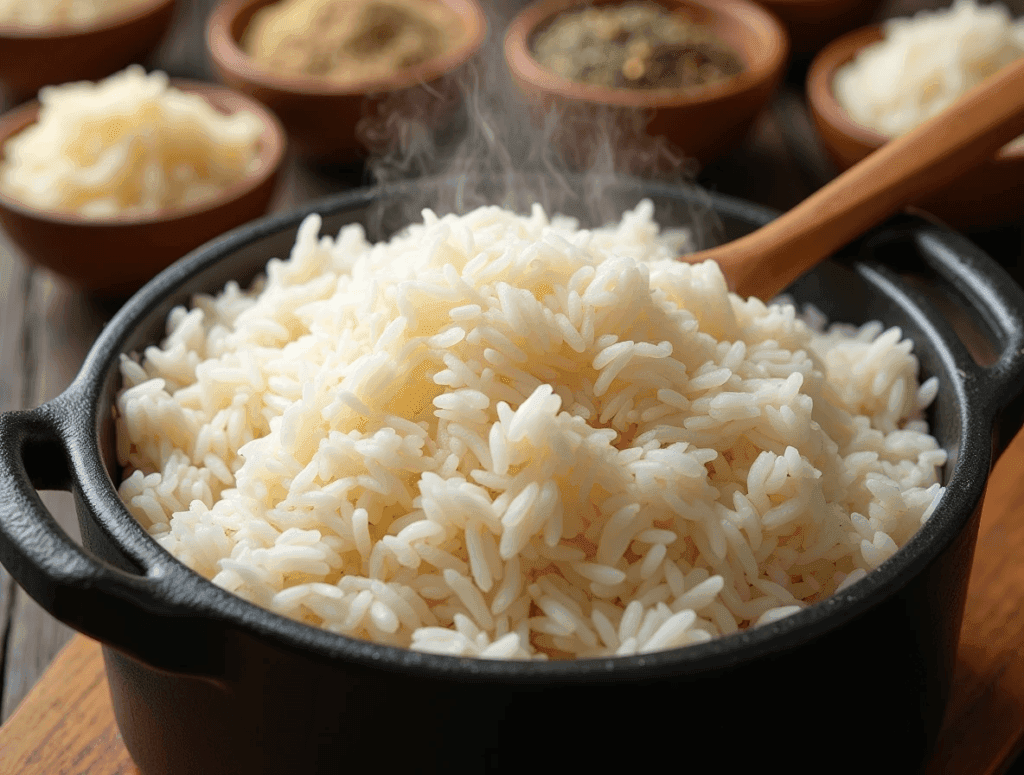
Elevating the Dish: Delicious Sauces and Sides to Complement Steak and Rice
A perfectly cooked steak and rice meal can be taken to the next level with the right sauces and sides. Here are some ideas to elevate your dish:
Sauces for Steak:
- Chimichurri: A tangy, herbaceous sauce made with parsley, garlic, vinegar, and olive oil. It’s perfect for grilled steak and adds a burst of freshness.
- Garlic Butter: Rich and indulgent, garlic butter sauce is a classic choice for steak. The creamy, garlicky flavors complement the beef wonderfully.
- Mushroom Sauce: A savory, earthy sauce made with sautéed mushrooms, garlic, and cream. It’s ideal for pairing with steaks like filet mignon or ribeye.
Sides to Pair with Steak and Rice:
- Grilled Vegetables: Vegetables like asparagus, bell peppers, and zucchini add a healthy crunch to the meal, balancing the richness of the steak.
- Sauteed Spinach: A simple side dish that’s packed with vitamins and minerals, sauteed spinach adds a fresh, slightly bitter contrast to the meal.
- Fresh Salad: A light salad with arugula, mixed greens, or a classic Caesar salad adds a refreshing crunch that complements the hearty steak and rice.
Serving and Presentation: Making Your Steak and Rice Look as Good as It Tastes
The way you present your steak and rice can make the meal feel even more special. Here are some tips for serving:
- Slice the Steak Against the Grain: This will ensure that each bite is tender and easy to chew.
- Serve on Warm Plates: To keep the steak and rice warm, serve them on pre-warmed plates.
- Add Fresh Herbs or Garnishes: A sprinkle of freshly chopped parsley or thyme adds a pop of color and a touch of elegance to your plate.
- Layering: Serve the rice first, then top it with the steak slices. You can drizzle the sauce over the steak or serve it on the side.
Conclusion: Your Perfect Steak and Rice Awaits!
Now that you’ve uncovered all the secrets to cooking the perfect steak and rice meal, it’s time to get cooking! Whether you stick to the classic flavors or experiment with new cuts of steak and rice varieties, this dish will never disappoint. It’s simple, satisfying, and guaranteed to impress.
So, fire up that grill or skillet, and get ready to enjoy the best steak and rice you’ve ever tasted. Don’t forget to share your creations and variations with us—let’s see how you make this dish your own!
FAQs: Your Steak and Rice Questions Answered
1. What is the best cut of steak for steak and rice? The best cut of steak depends on your personal preferences, but some popular options include ribeye for its rich flavor, sirloin for its balance of tenderness and affordability, and filet mignon for its incredible tenderness. New York strip is also a great option for a flavorful yet lean cut.
2. How do I cook the perfect steak? To cook the perfect steak, start by bringing it to room temperature before seasoning generously with salt and pepper. Use a heavy skillet or grill to achieve a beautiful sear on both sides. Depending on your desired level of doneness, use a meat thermometer to check the internal temperature. Let the steak rest for a few minutes after cooking to ensure it stays juicy.
3. Can I use brown rice instead of white rice for steak and rice? Yes! Brown rice is a great alternative if you prefer a healthier, fiber-rich option. While it has a chewier texture than white rice, it pairs wonderfully with steak and adds a slightly nutty flavor to the dish.
4. How do I make my rice more flavorful to complement steak? You can elevate the flavor of your rice by cooking it in broth instead of water, adding herbs like bay leaves or thyme, or incorporating a small amount of butter or olive oil. You can also stir in a pinch of salt and pepper for a simple flavor boost.
5. What are some good side dishes to serve with steak and rice? Grilled or roasted vegetables like asparagus, bell peppers, and zucchini are excellent sides to complement steak and rice. A fresh salad or sautéed spinach also pairs well with the meal, adding freshness and balance.
6. How do I know when my steak is done cooking? To check the doneness of your steak, use a meat thermometer. Here are the ideal temperatures for various doneness levels:
- Rare: 120-125°F
- Medium-rare: 130-135°F
- Medium: 140-145°F
- Medium-well: 150-155°F
- Well-done: 160°F and above
Call to Action:
Ready to create your own perfect steak and rice dish? Try out the tips and techniques shared in this guide, and let us know how it turned out. Have your own secret steak and rice recipes or variations? Share them in the comments below!

